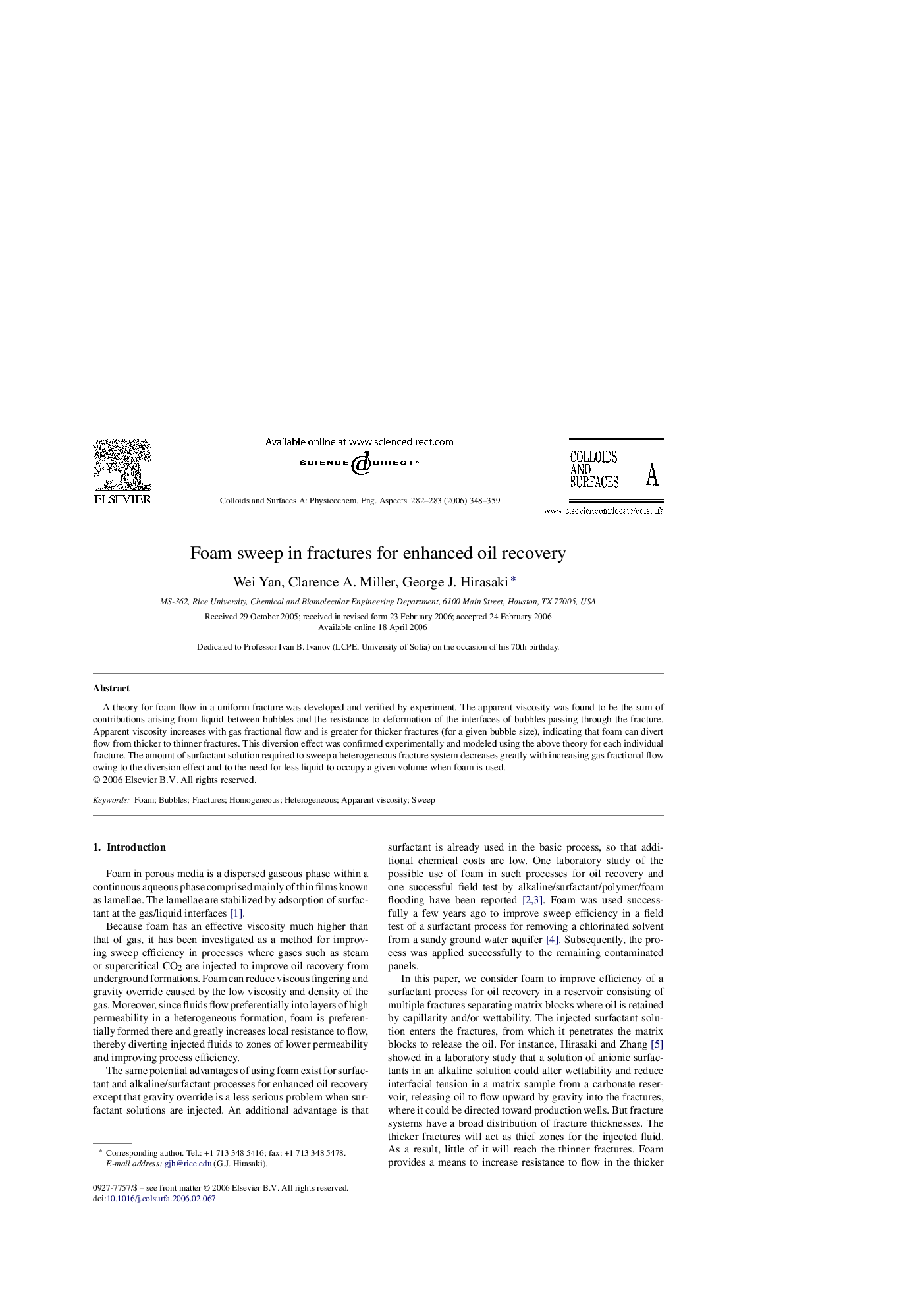| Article ID | Journal | Published Year | Pages | File Type |
|---|---|---|---|---|
| 598401 | Colloids and Surfaces A: Physicochemical and Engineering Aspects | 2006 | 12 Pages |
Abstract
A theory for foam flow in a uniform fracture was developed and verified by experiment. The apparent viscosity was found to be the sum of contributions arising from liquid between bubbles and the resistance to deformation of the interfaces of bubbles passing through the fracture. Apparent viscosity increases with gas fractional flow and is greater for thicker fractures (for a given bubble size), indicating that foam can divert flow from thicker to thinner fractures. This diversion effect was confirmed experimentally and modeled using the above theory for each individual fracture. The amount of surfactant solution required to sweep a heterogeneous fracture system decreases greatly with increasing gas fractional flow owing to the diversion effect and to the need for less liquid to occupy a given volume when foam is used.
Related Topics
Physical Sciences and Engineering
Chemical Engineering
Colloid and Surface Chemistry
Authors
Wei Yan, Clarence A. Miller, George J. Hirasaki,
